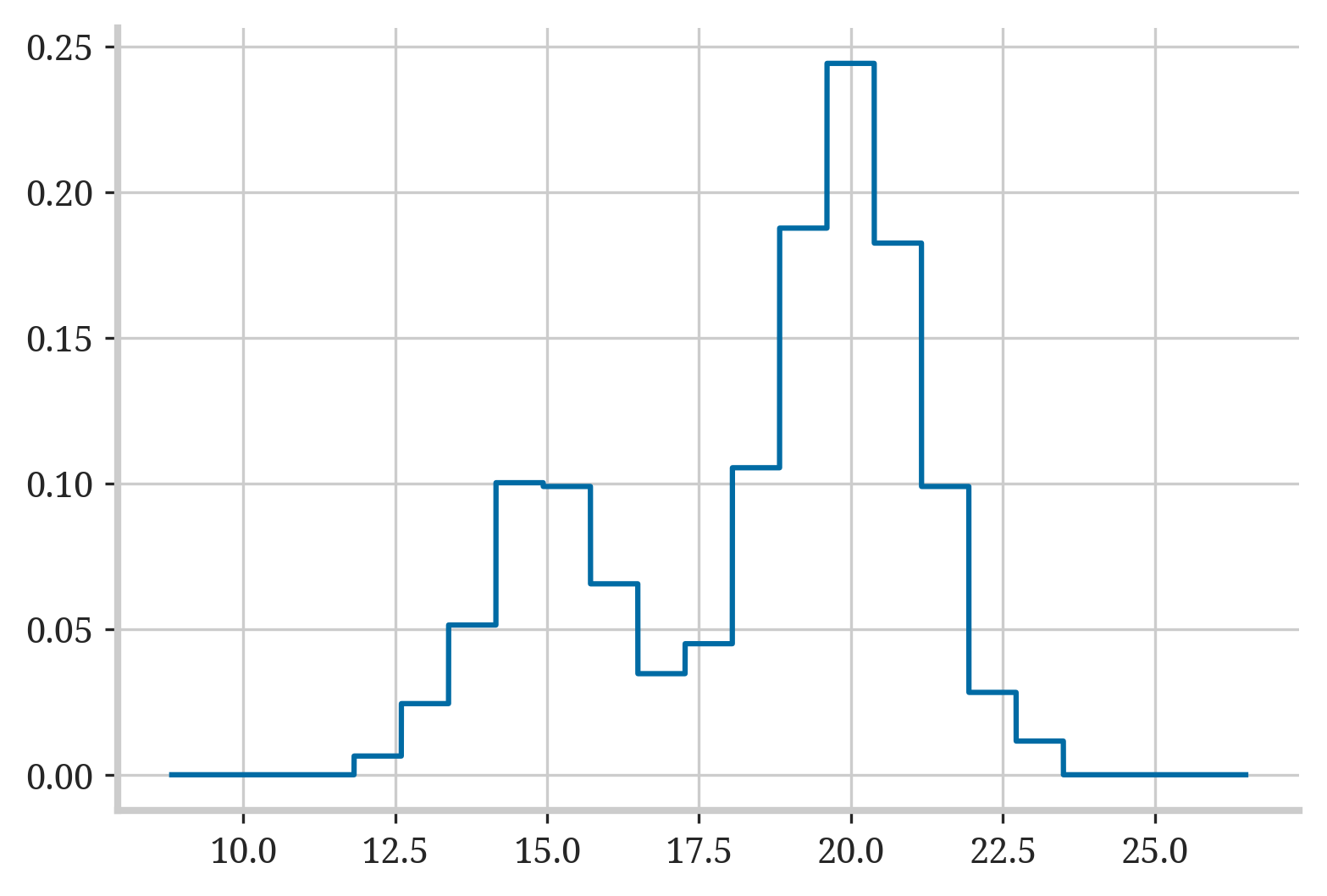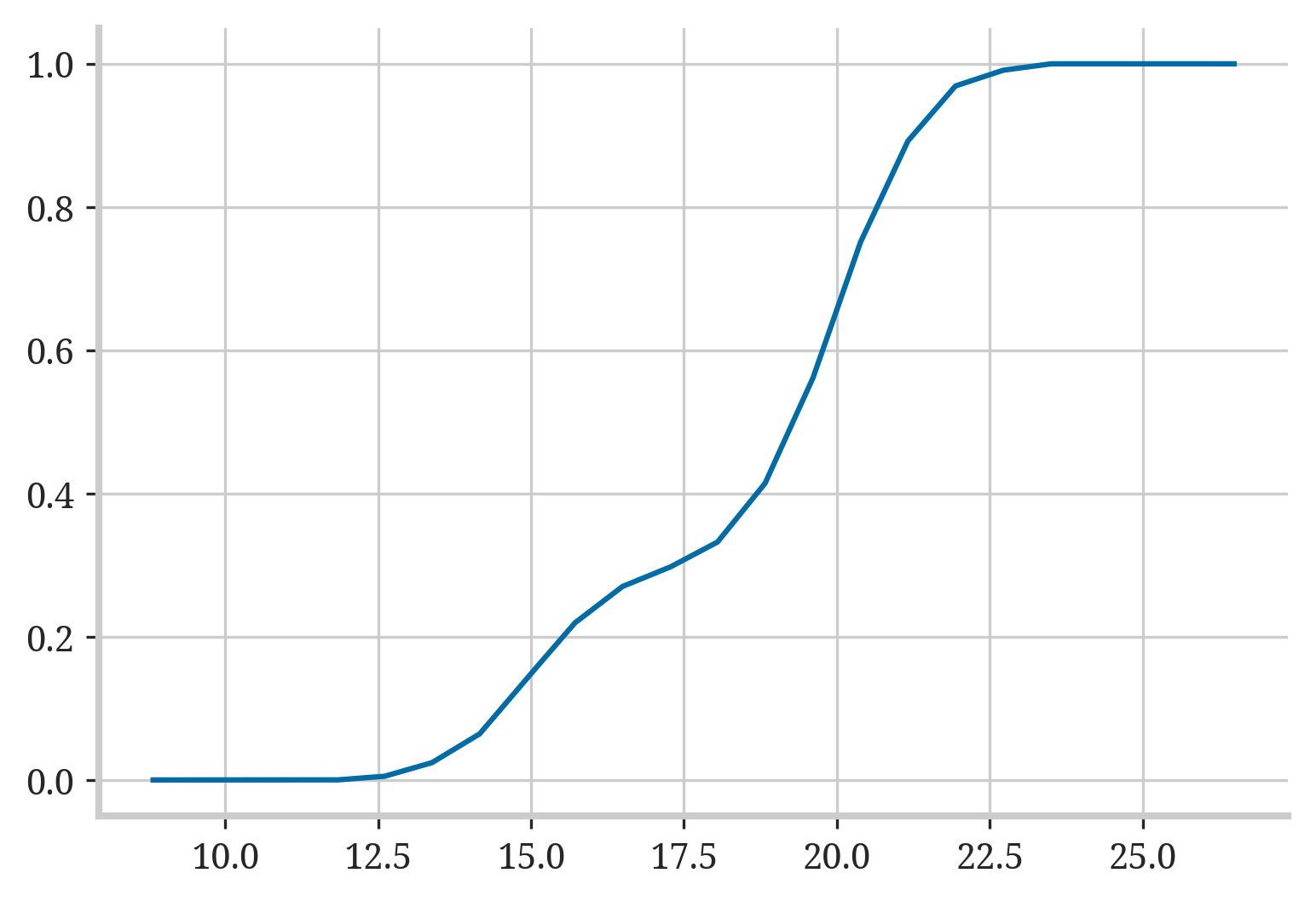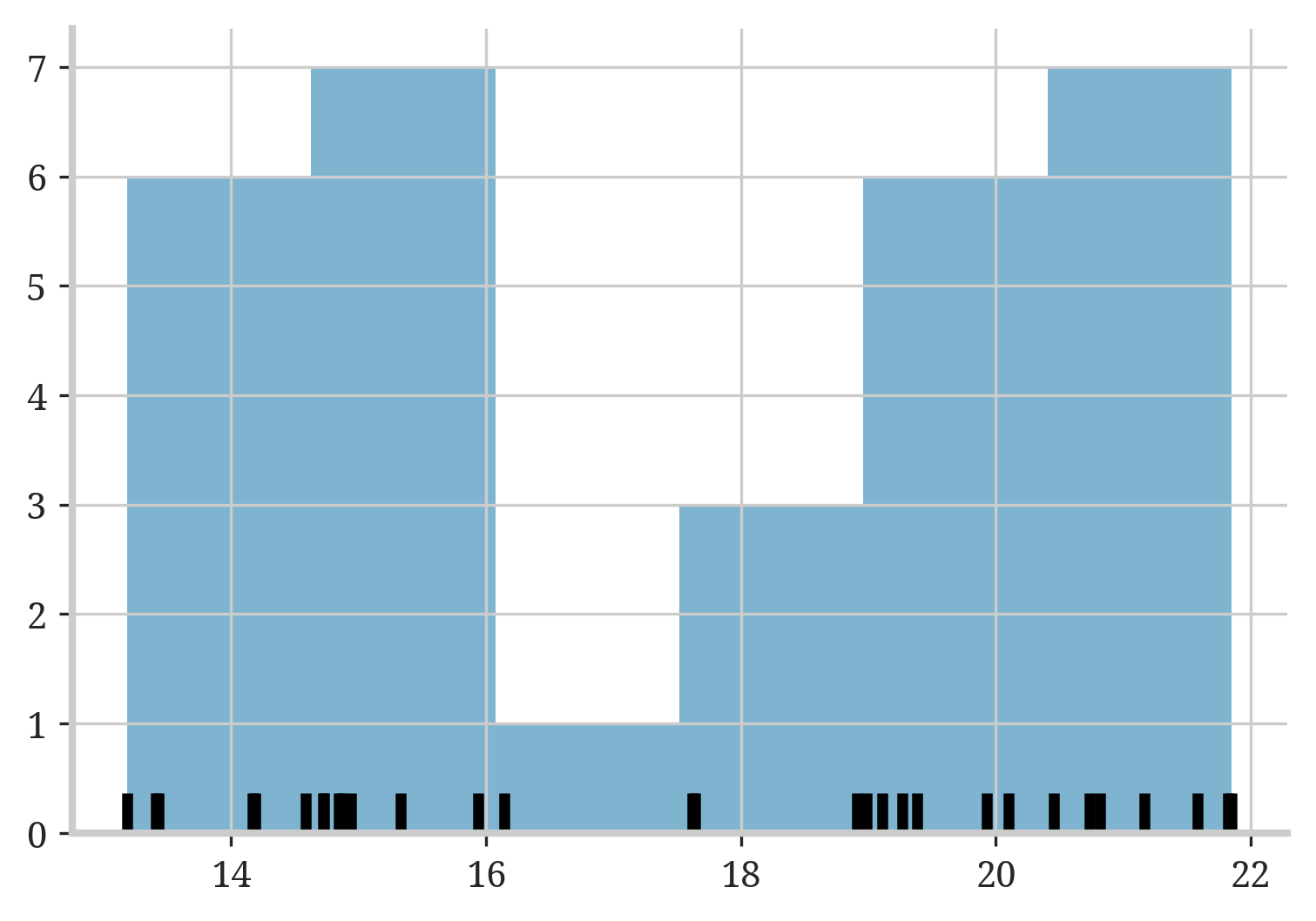Note
Click here to download the full example code
Histograms¶
Load a histogram from a file, plot it, draw random samples.
from __future__ import absolute_import, print_function, division
# Author: Moritz Lotze <mlotze@km3net.de>
# License: BSD-3
import h5py
import matplotlib.pyplot as plt
import numpy as np
import scipy.stats
import seaborn as sns
import km3pipe.style.moritz # noqa
Out:
Loading style definitions from '/home/docs/checkouts/readthedocs.org/user_builds/km3pipe/conda/stable/lib/python3.5/site-packages/km3pipe/kp-data/stylelib/moritz.mplstyle'
Load the histogram from a file. a histogram is just bincounts + binlimits.
filename = "../data/hist_example.h5"
with h5py.File(filename, 'r') as f:
counts = f['/hist/counts'][:]
binlims = f['/hist/binlims'][:]
print(counts)
print(counts.shape)
print(binlims)
print(binlims.shape)
Out:
[ 5 19 40 78 77 51 27 35 82 146 190 142 77 22 9]
(15,)
[11.82382487 12.60194812 13.38007137 14.15819462 14.93631788 15.71444113
16.49256438 17.27068763 18.04881088 18.82693413 19.60505738 20.38318064
21.16130389 21.93942714 22.71755039 23.49567364]
(16,)
create a distribution object
hist = scipy.stats.rv_histogram((counts, binlims))
plot it
# make an x axis for plotting
padding = 3
n_points = 10000
x = np.linspace(binlims[0] - padding, binlims[-1] + padding, n_points)
plt.plot(x, hist.pdf(x))

plot the cumulative histogram
plt.plot(x, hist.cdf(x))

sample from the histogram (aka draw random variates)
n_sample = 30
sample = hist.rvs(size=n_sample)
let’s plot it (use seaborn to plot the data points as small vertical bars)
plt.hist(sample, bins='auto', alpha=.5)
sns.rugplot(sample, color='k', linewidth=3)

Total running time of the script: ( 0 minutes 0.211 seconds)